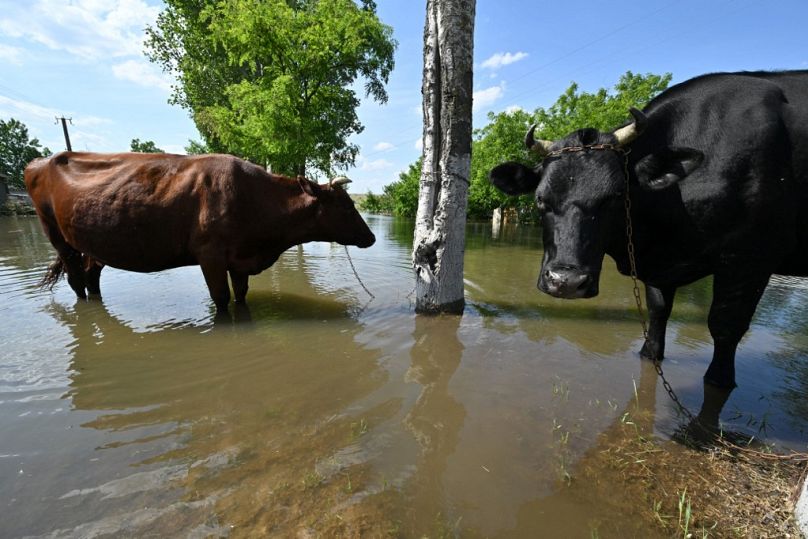
More than a month has passed since the explosion at the Kakhovka Dam in southern Ukraine. Water levels have since declined and fighting has intensified along the Dnieper River, which marks the line between Kyiv and Moscow’s battling armies.
When the dam collapsed, dozens of people died and thousands more were faced with homelessness and lack of drinking water. And much of the area’s environment and agriculture have been heavily damaged.

“The entire ecosystem of the reserves has been destroyed and there is some scope for reviving the ecosystem of a freer, flowing river. However, this involves a catastrophic change for all native species,” Eugene Simonov, an expert of the Working Group on Environmental Consequences of the War in Ukraine, told Euronews.
“The newly recovered species will be more adapted to the river and to the reserve reservoir. And this is a complete catastrophe for people who are used to other conditions.”
The water levels of the reservoir dropped by around 70% after the breach. And the resulting ecological disaster could take decades to fully unfold.
Crimea could dry up without irrigation while agriculture in Ukraine’s Kherson and Zaporizhzhia regions has been heavily damaged.

But despite this, some environmentalists like Simonov are arguing against restoring the reservoir.
“The idea that someone will come in and rebuild this inefficient reservoir looks very strange to me as an environmentalist in the 21st century,” Simonov said.
He added that the dam had previously provided residents with “very low-quality water with a lot of pollution” and caused more water to evaporate than was supplied for agriculture.
The reservoir also took up more than 2,000 square kilometres of land, and Simonov argues that this area could have been “used for many other environmental and economic purposes, much more productively.”
“So personally, as an ecologist, I would not support or advise restoring the reservoir,” he said.
“But I would support very intensive research and action that would help people adapt to the new reality and help meet the needs with other, more modern means that are more environmentally friendly and more sustainable in the long term.”

The regions most affected by the Kakhovka Dam breach have also been heavily impacted by fighting, making new research and initiatives even more difficult.
Nevertheless, Simonov argues that it is the right choice.
“The idea of rebirth after the war is that you must think about how to do better,” he said.
“You must not think about how to bring back the pre-war situation because that could be the worst thing you can achieve. That’s what recovery is all about. It requires modernisation and more sustainable living conditions. Otherwise, you’re going to have problems.”





